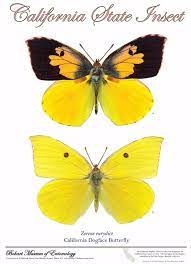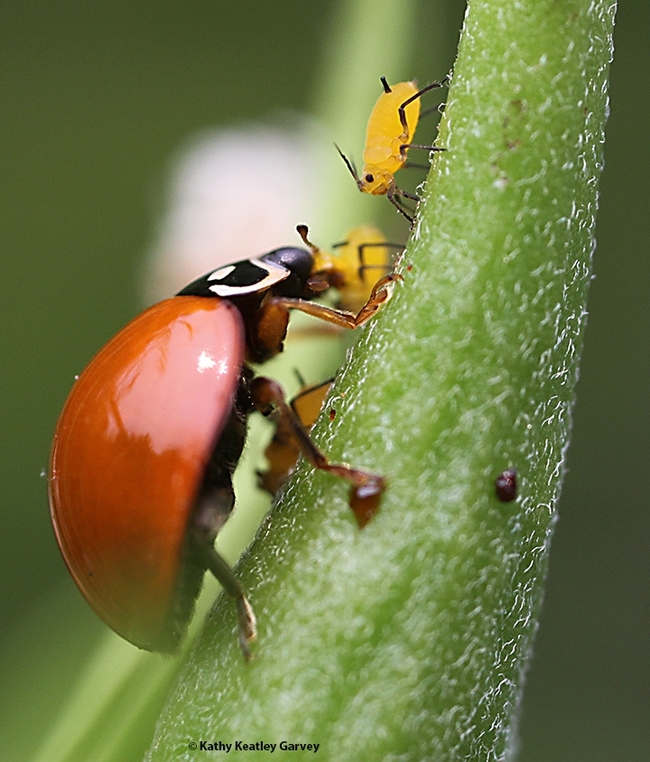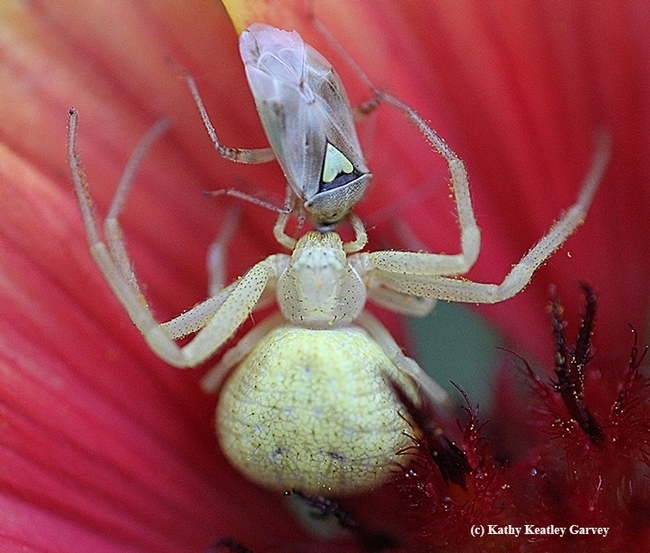
You're in luck.
The Bohart Museum of Entomology, located in Room 1124 of the Academic Surge Building on Crocker Lane, UC Davis campus, will host four public events from May 28 through July 16. All are free and open to the public. Parking is also free.
Saturday, May 28, 1 to 4 p,m.
Open house, "Bugs in Ag: What Is Eating Our Crops and What Is Eating Them?"
Cooperative Extension specialist and agricultural entomologist Ian Grettenberger of the UC Davis Department of Entomology and Nematology faculty will explore the relationships between insects and agriculture. His areas of expertise include field crops; vegetable crops; insects, mites and other arthropods affecting plants; biological control of pests affecting plants; and beneficial insects. Grettenberger, who joined the UC Davis faculty in January 2019, targets a wide variety of pests, including western spotted and striped cucumber, beetles, armyworms, bagrada bugs, alfalfa weevils, aphids, and thrips.
Saturday June 25, 1 to 4 p.m.
Open house, "Eight-Legged Encounters"
This event is all about arachnids featuring scientists from across the country. It is in collaboration with the American Arachnological Society's 2022 meeting, scheduled June 26-30 on the UC Davis campus. The annual meeting will be hosted by two UC Davis arachnologists: Jason Bond, the Evert and Marion Schlinger Endowed Chair in Insect Systematics, UC Davis Department of Entomology and Nematology, and associate dean, College of Agricultural and Environmental Sciences, and Joel Ledford, assistant professor of teaching, Department of Plant Biology, College of Biological Sciences.

Public event to be held in California Hall for arachnid novices and experts alike. This is in collaboration with the American Arachnological Society's meeting at UC Davis.
Saturday, July 16, 1 to 4 p.m.
"Celebrating 50 Years of the Dogface Butterfly:California's State Insect"
Scientists and the public will celebrate the 50th anniversary of the California State Legislature' designation of the dogface butterfly as the state insect.
Folsom Lake College professor and Bohart scientist Fran Keller, and Bohart associate Greg Karofelas, a volunteer docent for the Placer Land Trust's dogface butterfly tours, will on hand to discuss the butterfly. The California dogface butterfly, Zerene eurydice, is found only in California. It thrives in the 40-acre Shutamul Bear River Preserve near Auburn, Placer County. The preserve, part of the Placer Land Trust, is closed to the public except for specially arranged tours.
Keller is the author of 35-page children's book, The Story of the Dogface Butterfly, with photos by Keller and Kareofelas, and illustrations by former UC Davis student Laine Bauer. Kareofelas' images include the life cycle of the dogface butterfly that he reared. Keller holds a doctorate in entomology from UC Davis, where she studied with major professor Lynn Kimsey, director of the Bohart and UC Davis distinguished professor of entomology.
Kareofelas and Keller also teamed to create a dogface butterfly poster of the male and female. Both the book and the poster are available online from the the Bohart Museum of Entomology gift shop.
California legislators adopted the dogface butterfly as the official state insect on July 28, 1972. But as early as 1929, entomologists had already singled it out as their choice for state insect. Their suggestion appears in the California Blue Book, published by the State Legislature in 1929. (Read more on how the butterfly became the state insect under the Ronald Reagan administration.)
The dogface butterfly is so named because the wings of the male appear to be a silhouette of a poodle. It is also known as "the flying pansy."
Bohart Museum. The Bohart Museum is the home of a worldwide collection of eight million insect specimens, plus a gift shop and a live "petting zoo," comprised of Madagascar hissing cockroaches, stick insects and tarantulas.
Bohart Museum Contact information:
https://bohart.ucdavis.edu/
(530) 752-0493
bmuseum@ucdavis.edu
Attached Images:

